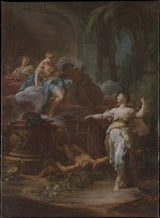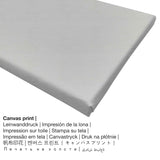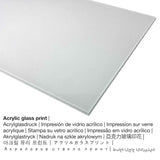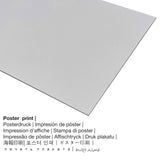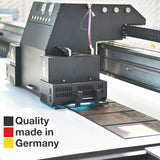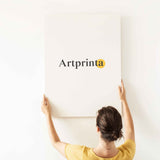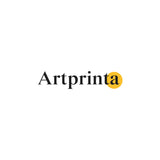Corrado Giaquinto, 1760 - Medea Rejuvenating Aeson - fine art print
Tax included. Shipping calculated at checkout.
Original artwork description from The Metropolitan Museum of Art (© Copyright - The Metropolitan Museum of Art - The Metropolitan Museum of Art)
This subject from Ovid's Metamorphoses depicts the sorceress Medea casting spells to rejuvenate her husband's father Aeson, whose body lies in the middle of a magic circle. Two altars, dedicated to Hecate and to Youth, are near the figures; a black sheep has been sacrificed on one of them. An inscription on the back of the canvas identifies this painting as a sketch executed by Giaquinto during his sojourn in Spain (1753–62) for a tapestry for the Real Fábrica de Tapices de Santa Bárbara in Madrid. The tapestry, probably destined for one of the royal residences, was never produced.
Background information about the original artpiece
| Title of the artpiece: | "Medea Rejuvenating Aeson" |
| Categorization of the artwork: | painting |
| General term: | classic art |
| Temporal classification: | 18th century |
| Year of creation: | 1760 |
| Age of artwork: | around 260 years old |
| Artwork original medium: | oil on canvas |
| Original artwork size: | 29 x 21 1/2 in (73,7 x 54,6 cm) |
| Museum / collection: | The Metropolitan Museum of Art |
| Museum location: | New York City, New York, United States of America |
| Available under: | The Metropolitan Museum of Art |
| License of artwork: | public domain |
| Courtesy of: | The Metropolitan Museum of Art, New York, Purchase, University Place Foundation Gift, 2011 |
| Creditline of artwork: | Purchase, University Place Foundation Gift, 2011 |
Contextual artist information
| Name: | Corrado Giaquinto |
| Also known as: | Cav. Corradi, Corado, Giacinto Corrado, Giaquinto, Cavaliere Corrado Giaquinto, Corrado Giacquinto, hyacinth corrado, Corado de Rome, Corrado Giaquinto, Chevalier Currado Giaquinto, Corrado, Giaquinto Corrado |
| Artist gender: | male |
| Nationality: | Italian |
| Professions: | painter |
| Country: | Italy |
| Classification: | old master |
| Styles of the artist: | Baroque |
| Age at death: | 63 years |
| Birth year: | 1703 |
| Hometown: | Molfetta, Bari province, Apulia, Italy |
| Year of death: | 1766 |
| Place of death: | Naples, Napoli province, Campania, Italy |
The product details
| Article categorization: | fine art print |
| Reproduction method: | digital reproduction |
| Manufacturing process: | digital printing (UV direct print) |
| Provenance: | Germany |
| Stock type: | on demand |
| Product usage: | wall decoration, wall décor |
| Image alignment: | portrait alignment |
| Side ratio: | 3 : 4 length : width |
| Image aspect ratio interpretation: | the length is 25% shorter than the width |
| Available reproduction fabrics: | poster print (canvas paper), metal print (aluminium dibond), canvas print, acrylic glass print (with real glass coating) |
| Canvas print (canvas on stretcher frame) size options: | 30x40cm - 12x16", 60x80cm - 24x31", 90x120cm - 35x47" |
| Acrylic glass print (with real glass coating): | 30x40cm - 12x16", 60x80cm - 24x31", 90x120cm - 35x47" |
| Poster print (canvas paper): | 30x40cm - 12x16", 60x80cm - 24x31", 90x120cm - 35x47" |
| Dibond print (alumnium material) sizes: | 30x40cm - 12x16", 60x80cm - 24x31", 90x120cm - 35x47" |
| Frame: | not included |
Order the material of your choice
We offer a range of various materials and sizes for every product. You can choose your your favorite size and material among the following options:
- Aluminium dibond print: An Aluminium Dibond print is a print with an impressive depth effect - for a modern look and a non-reflective surface. The Aluminium Dibond Print is your perfect introduction to the sophisticated world of fine art replicas with aluminum. The white and bright sections of the original artpiece shimmer with a silk gloss but without the glare. The UV print on Aluminum Dibond is the most popular entry-level product and is a truly modern way to showcase art reproductions, as it puts the viewer’s attention on the replica of the artwork.
- Canvas: The printed canvas material mounted on a wooden stretcher frame. Canvas prints are relatively low in weight, meaning that it is easy and straightforward to hang your Canvas print without extra wall-mounts. Canvas prints are suitable for any kind of wall in your home.
- Poster (canvas material): Our poster print is a printed canvas paper with a fine surface finish, that reminds the original artwork. It is ideally used for putting your art copy using a special frame. Please bear in mind, that depending on the absolute size of the poster we add a white margin between 2-6cm round about the artwork, which facilitates the framing.
- Acrylic glass print (with real glass coating): The print on acrylic glass, which is sometimes labelled as a plexiglass print, changes the artwork into décor. Additionally, the acrylic glass print offers a good alternative to aluminium and canvas art prints. The work of art is printed with state-of-the-art UV print machines. The special effect of this are vivid, deep color tones. Our plexiglass protects your custom art replica against light and external influences for several decades.
The artpiece Medea Rejuvenating Aeson from Corrado Giaquinto as your unique art copy
The 18th century painting was made by Corrado Giaquinto in the year 1760. The over 260 years old original has the size: 29 x 21 1/2 in (73,7 x 54,6 cm) and was produced on the medium oil on canvas. It forms part of the digital collection of The Metropolitan Museum of Art. We are delighted to mention that this public domain work of art is included with courtesy of The Metropolitan Museum of Art, New York, Purchase, University Place Foundation Gift, 2011. Creditline of the artwork: Purchase, University Place Foundation Gift, 2011. The alignment is in portrait format with a side ratio of 3 : 4, meaning that the length is 25% shorter than the width. Corrado Giaquinto was a painter from Italy, whose artistic style can mainly be classified as Baroque. The European artist was born in the year 1703 in Molfetta, Bari province, Apulia, Italy and deceased at the age of 63 in 1766 in Naples, Napoli province, Campania, Italy.
Important note: We try our utmost to describe our products as clearly as possible and to demonstrate them visually on the respective product detail pages. Still, the pigments of the printed materials and the imprint might differ to a certain extent from the image on your monitor. Depending on the settings of your screen and the quality of the surface, not all color pigments can be printed one hundret percent realistically. Since the fine art prints are processed and printed by hand, there might as well be slight differences in the size and exact position of the motif.
© Copyright | Artprinta (www.artprinta.com)

